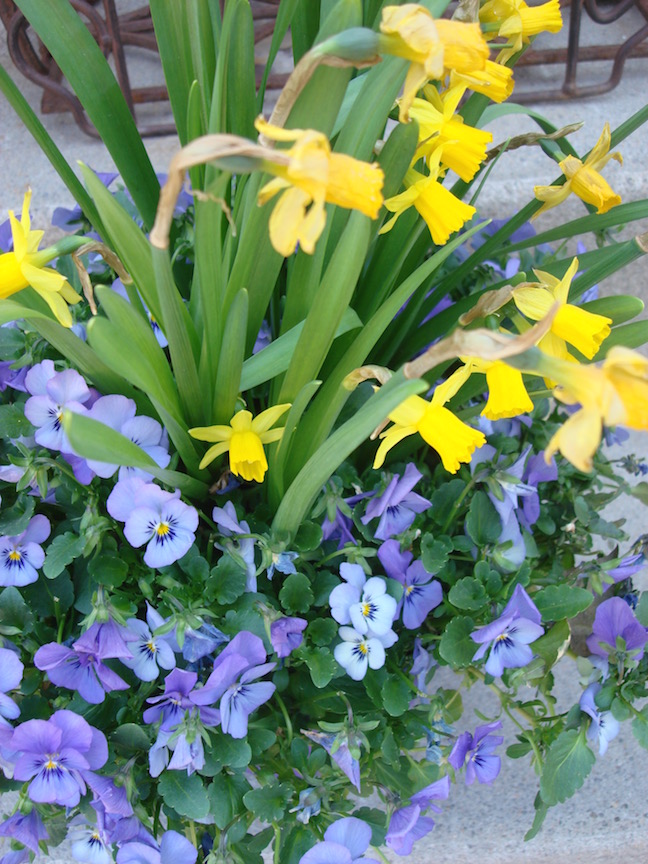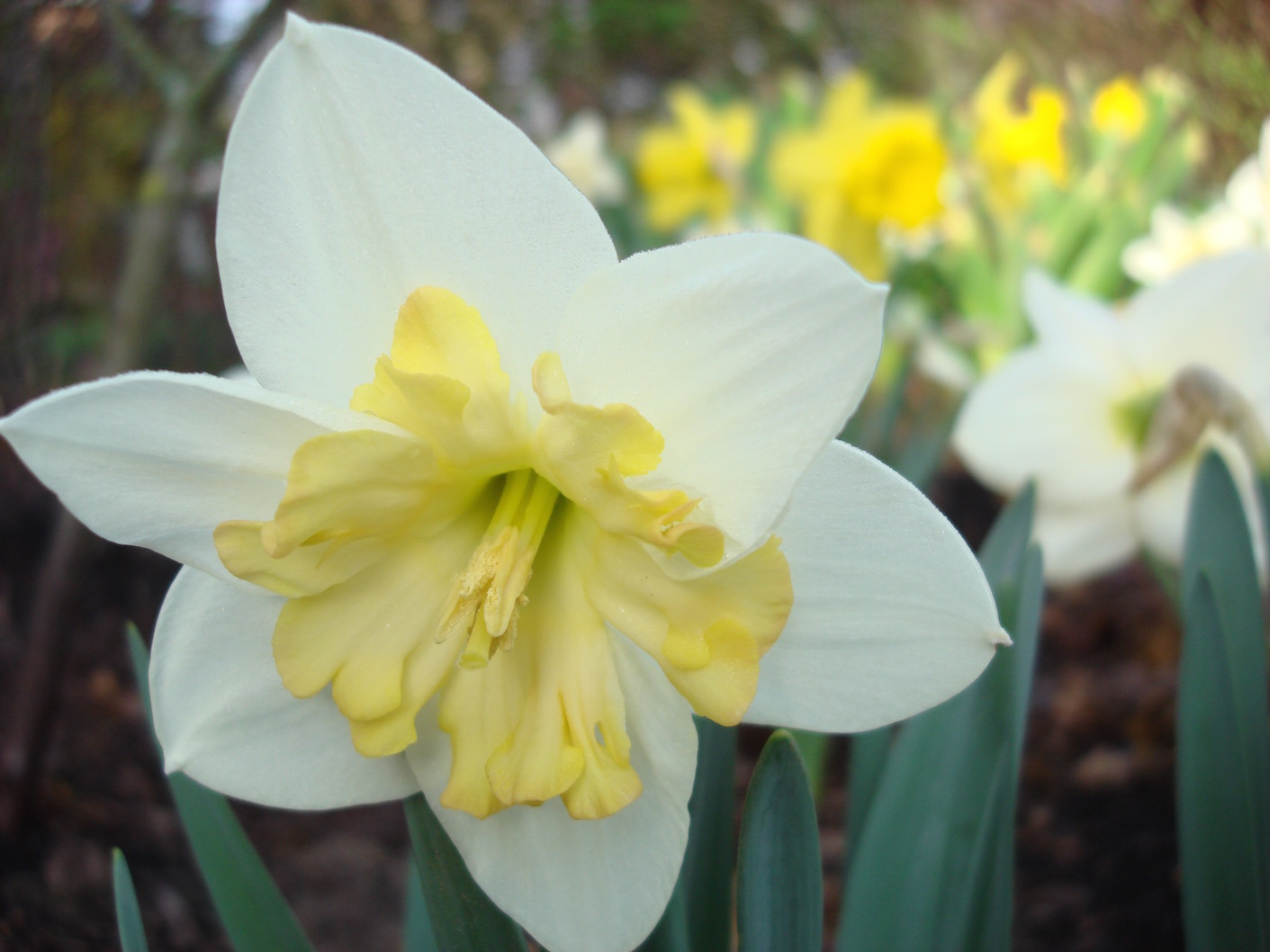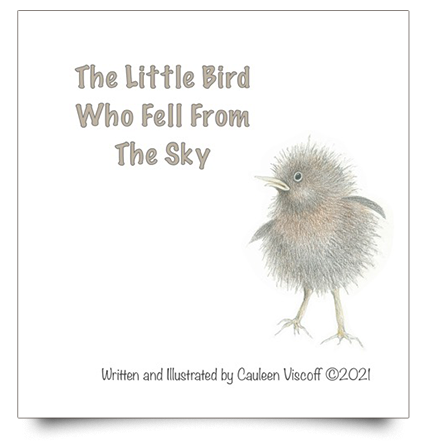I’d love to connect with you! Sign up for my monthly newsletter, "Garden Bliss & Blunder”
BULBS
Buying & Planting
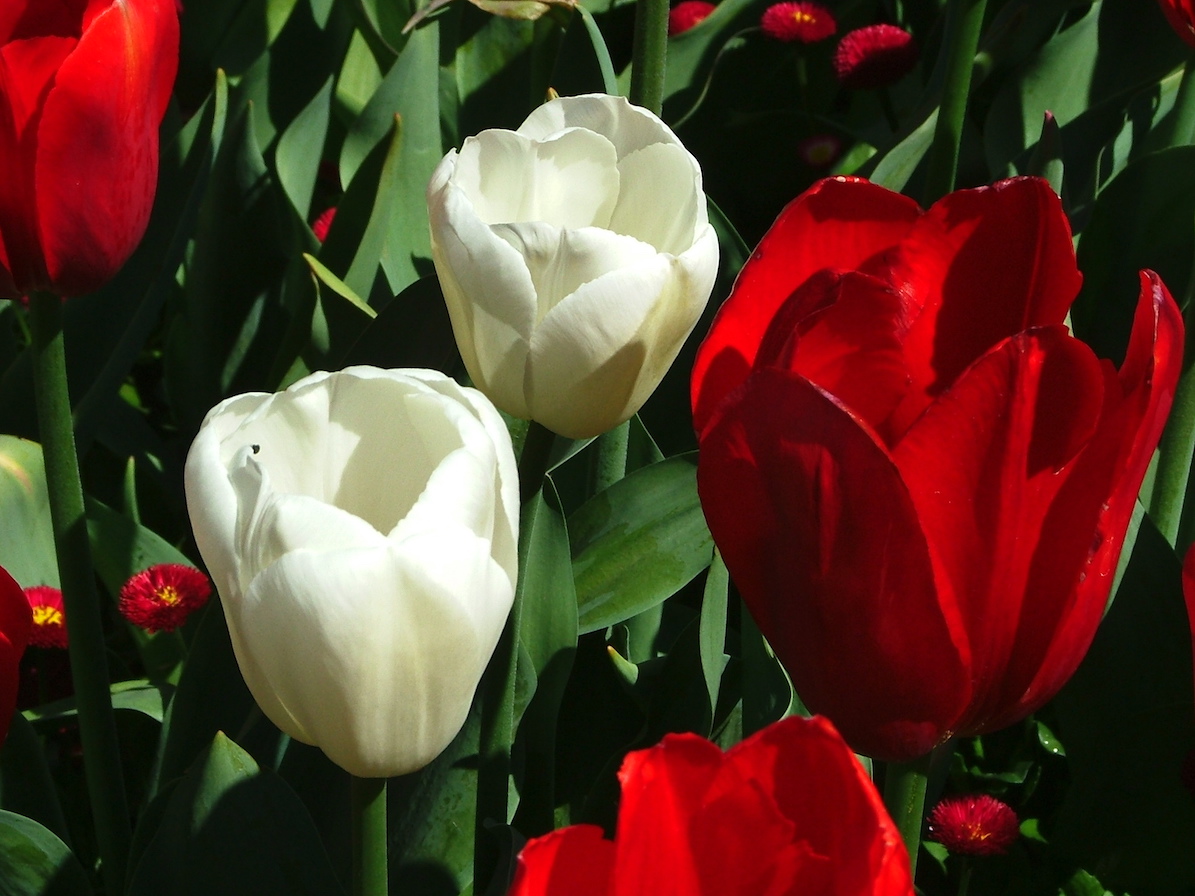
WHAT ARE THEY?:
Bulbs are amazing storage tanks - storing all the nutrients that help the plants survive their dormant period and then create glorious blooms.
TYPES OF BULBS:
- Tubers : like Begonias, Lilies and Dahlias
- True bulbs: Hyacinths, Tulips, Allium and Daffodils
- Corms: Crocosmia, Acidanthera, Gladiola, Crocus
- Rhizomes: Iris
Tuber Sketches
Left: Lilies, Dahlia
Middle:Ginger, Jerusalem Artichoke
Right: potato
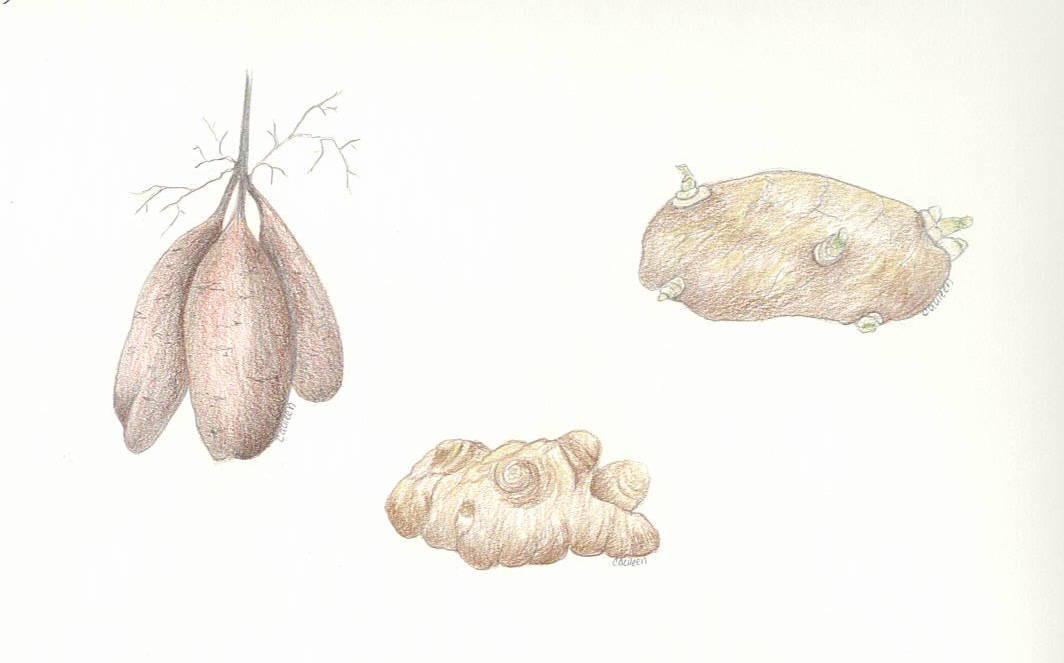
Below: True bulb: Tulip, Hyacinth, Daffodil, Onion
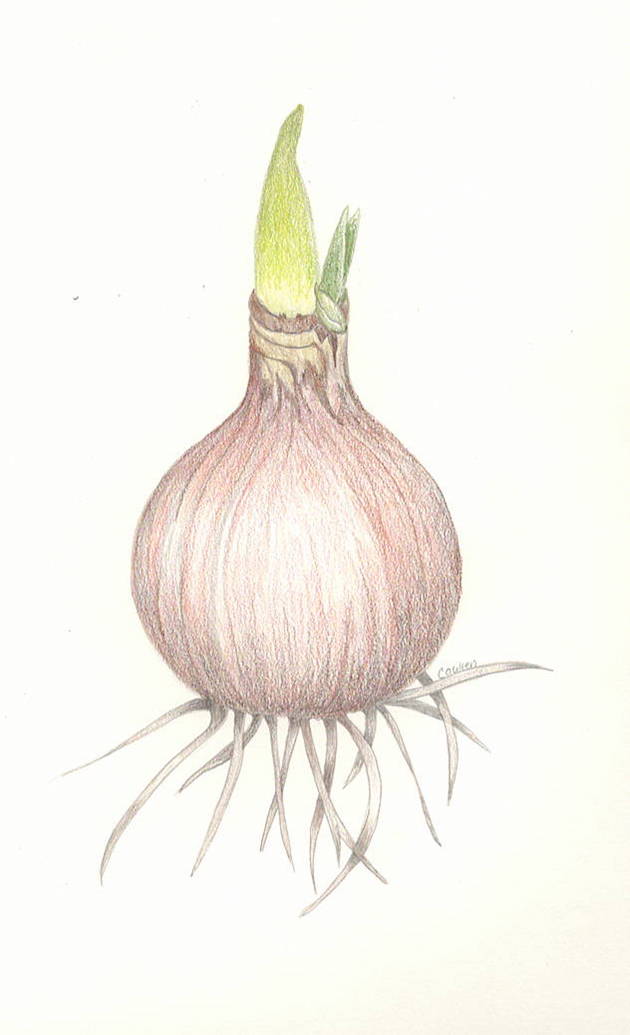
Corm:
Crocosmia, Crocus, Gladiola
with little cormels on the bottom
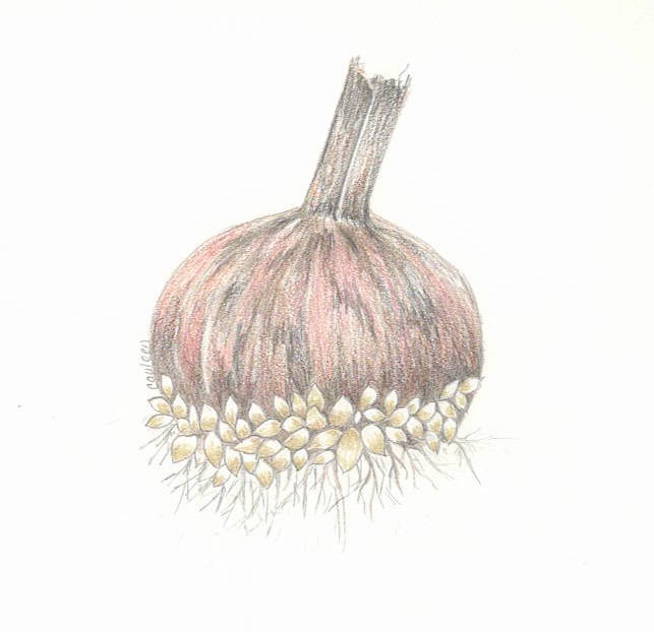
Rhizome: Iris
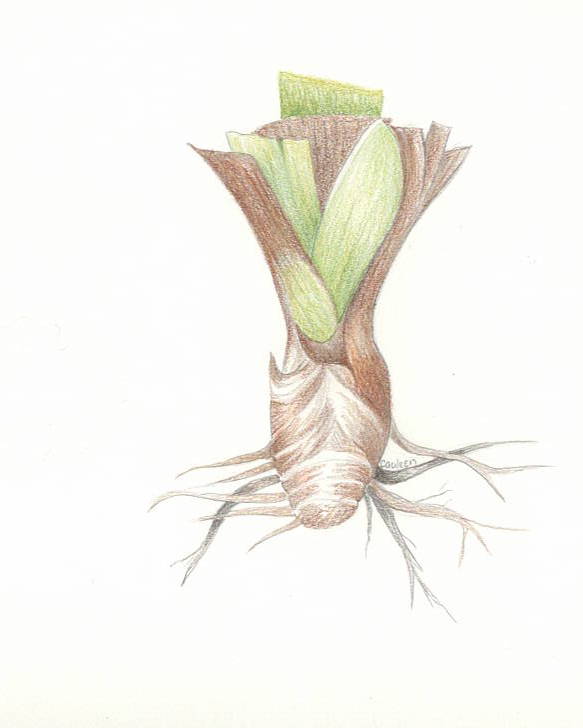
The planting-depth chart below is from Sloat Garden Centre
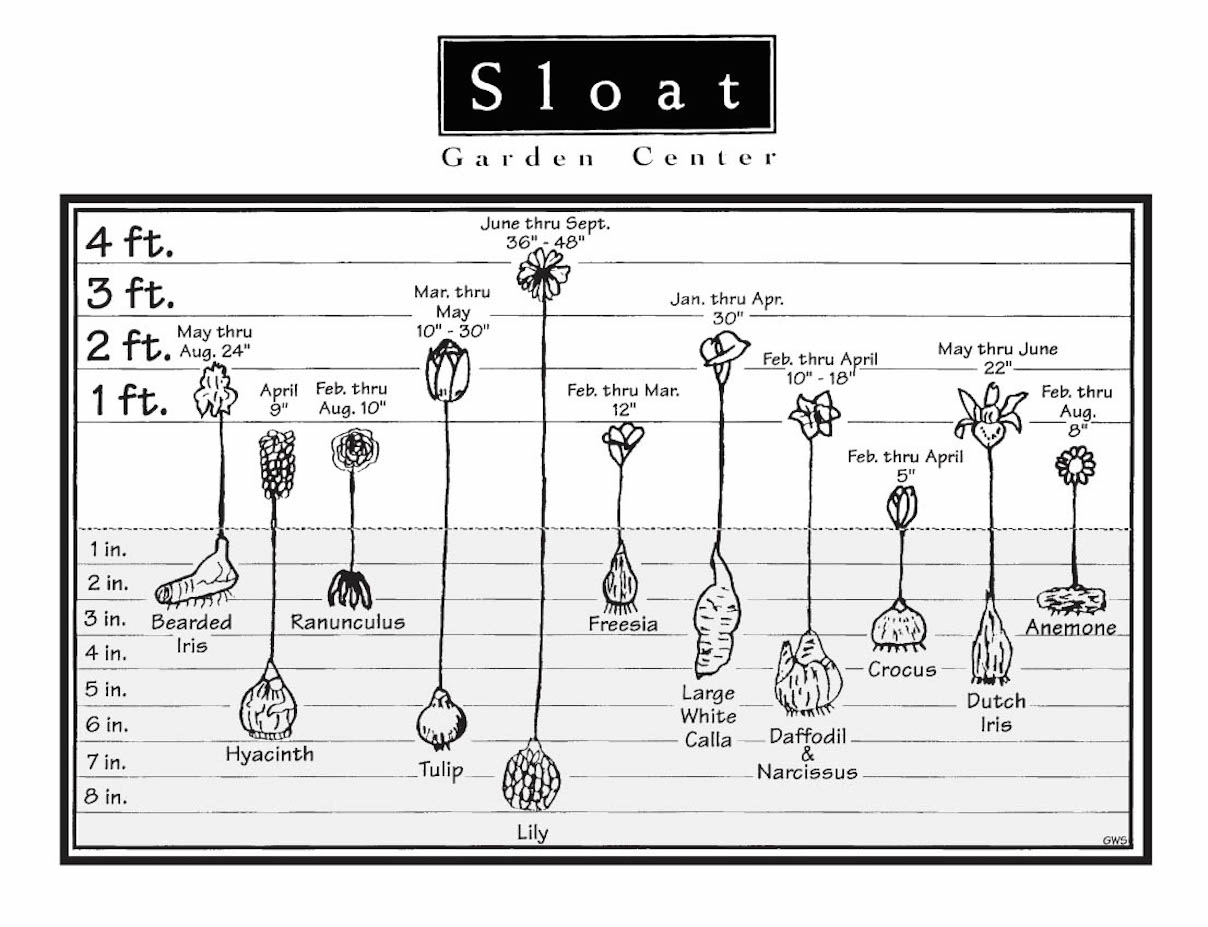
Can you imagine this Tulip Festival in Oregon?
What a stunning display !
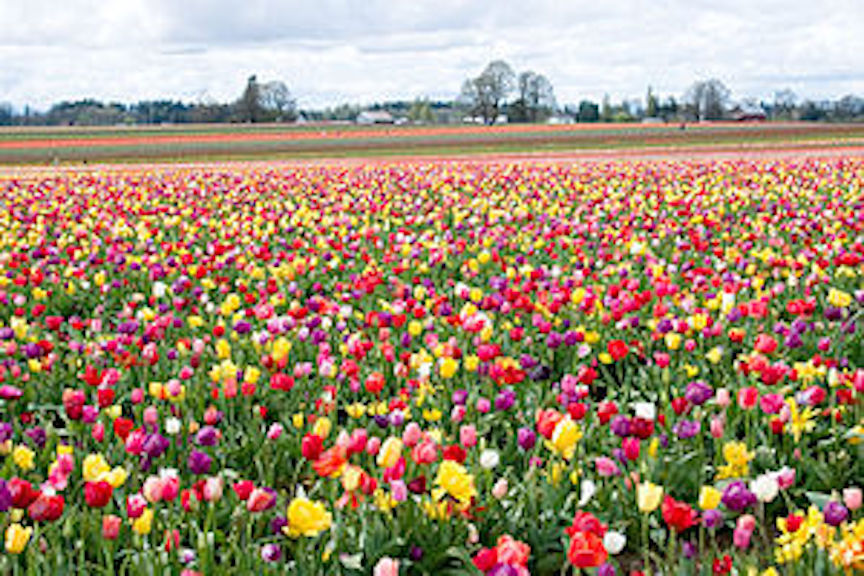
WHEN TO BUY:
- FALL - bulbs are in their dormant stage - buy Tulips (and plant them any time up to just before the ground freezes),
Daffodils, Crocus, Hyacinth, Allium - plant by the end of September or early October to give them a chance to set root.
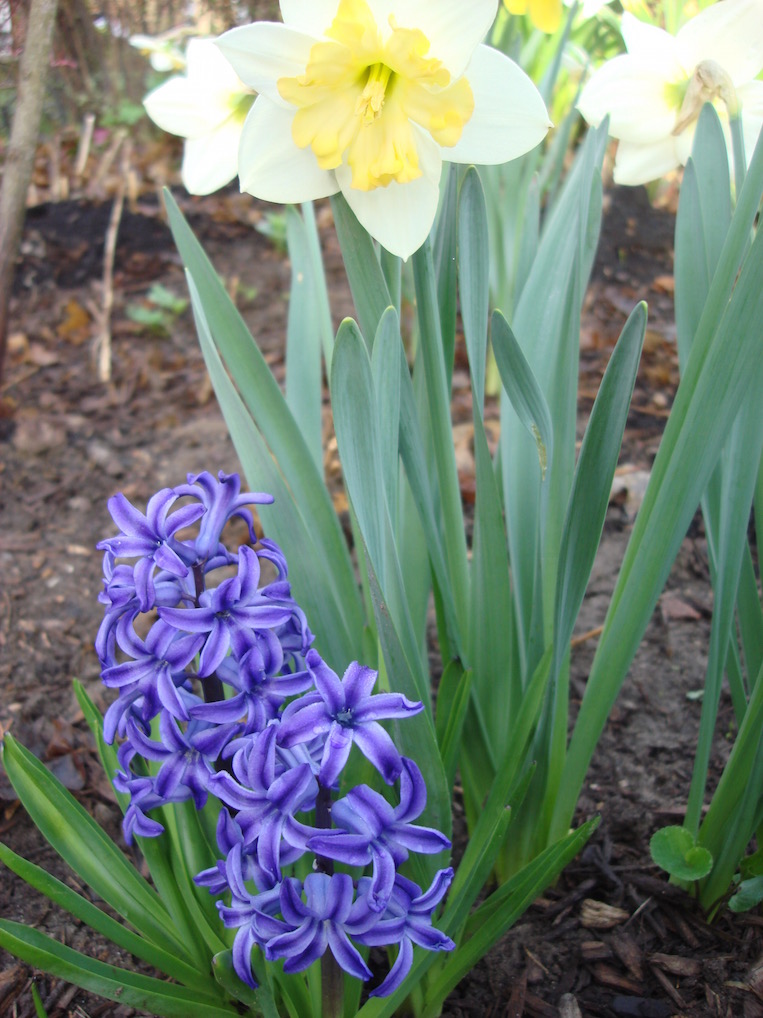
HOW TO PLANT:
DEPTHS:
- RHIZOMES - on the surface
- CROCUS, BEGONIA, LILIES -Close to the surface
(1 to 2 inches below)
- GLADS, DAFFODILS, DAHLIA
- Down 4 to 5 inches
- TULIPS - Deeper - 6-7 inches
- HYACINTH - Deepest - 7-8 inches
Dwarf Iris - See below
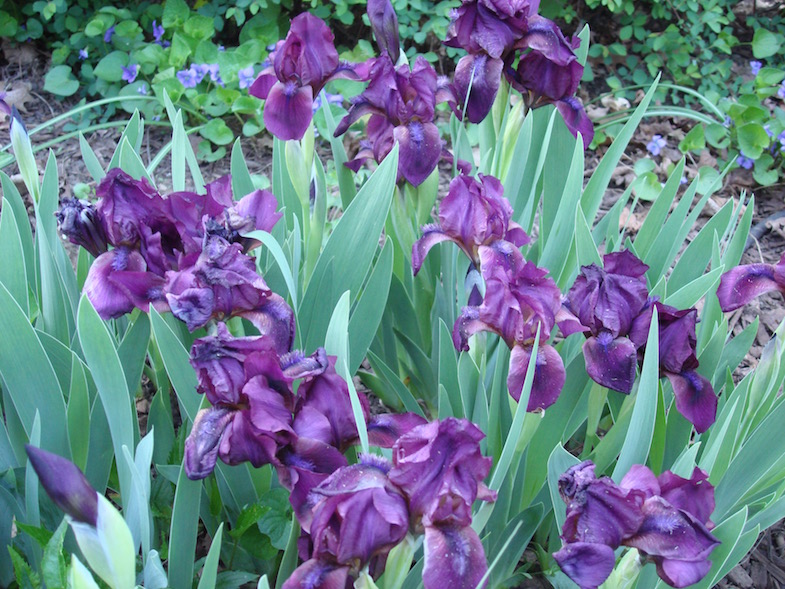
- Although all bulbs will eventually grow up, please plant them with their tips up and flat side down so they don’t waste energy trying to grow up when planted down.
- Rhizomes (Iris) like to be planted close to the surface of the soil with their roots facing down. If planted too deeply, covering the whole rhizome, will slow down their bloom.
- I like to dig a larger hole about 8 to 10 inches deep and put my Hyacinth in first… a layer of soil - then Tulips with a sprinkling of some blood meal or "chicken poop" to prevent squirrels from snacking or relocating, then too off with daffodils and crocus as squirrels are not as fond of them.
- Plant close together, but not touching - they need room to spread…
This layering method requires a bit of planning so this large and showy clump does not all grow in one big heap together…. it will make a magnificent showing when spread out so they each have room, but at the same time, create a large grouping.
Here is what just a few Allium look like......
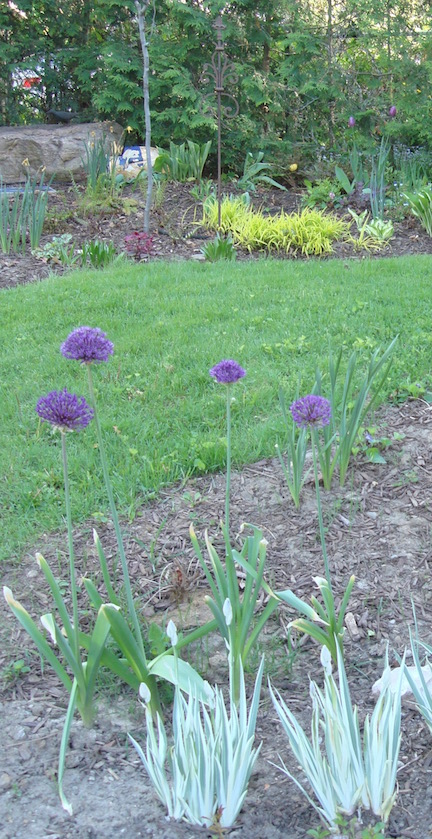
But look below....What a difference! Most of us cannot afford this large show, so start with as many as your budget will allow this year, and add a few more each year and set them into the garden behind other perennials so they don't look lost like mine do above.
Interplanted with Iris whose spikes leaves will hide brown allium or other bulb dying leaves.
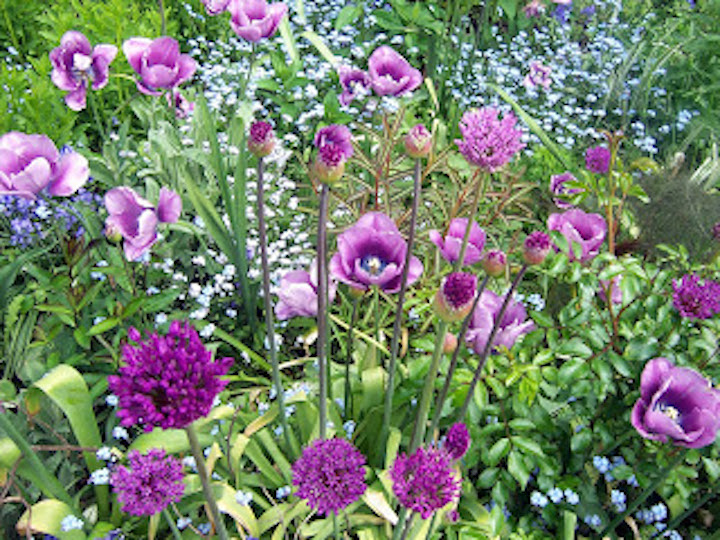
Imagine how one or two tulips would look compared to this below from the Ridgeview Garden Centre....you make more work for yourself if you plant just one bulb in one hole.... put at least 5 or 6 in each instead for a better show.
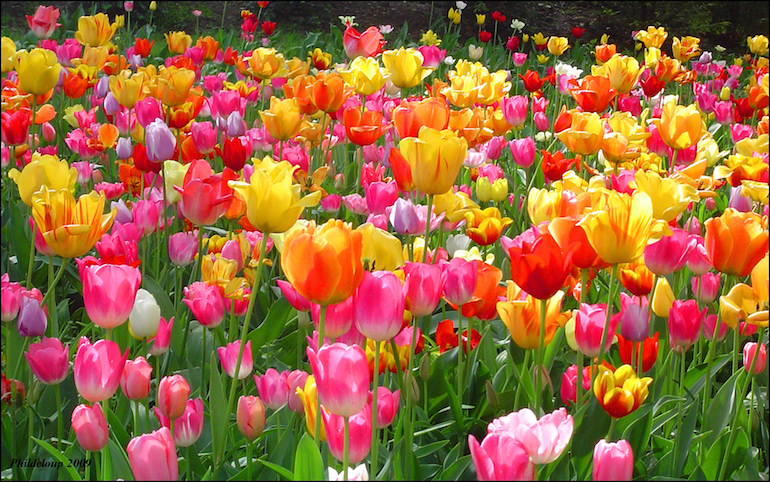
Remember Wordswoth's famous poem about -
a "Host of Golden Daffodils"?
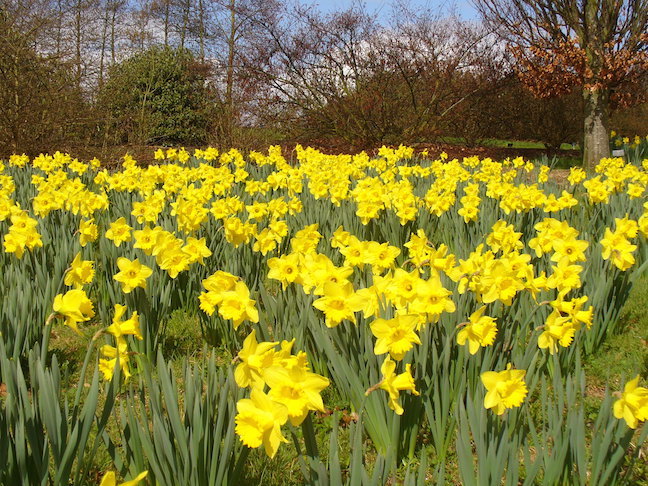
Plant as many as you can afford in clumps and let them naturalize. In a few short years, they will form what Gertrude Jekyll called " a drift" of colour.
When the blooms are spent, cut back the bloom stems only and let the leaves lie in the garden - no matter how much you think they are not pretty.... put some mulch over them or plant annuals like Pansies in front.
All the green from the leaves needs to return to the bulb - nutrients for next season.
